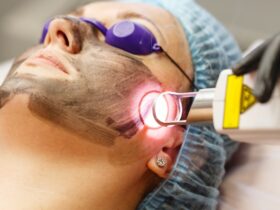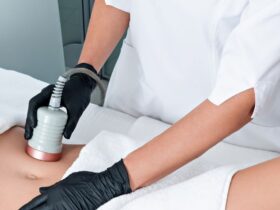If you’ve noticed spider veins on your legs or experience pain, heaviness, or swelling in your lower limbs, you might be dealing with a venous condition. Thankfully, a vein clinic can help. These medical centers specialize in diagnosing and treating vein-related issues—ranging from cosmetic concerns to serious medical conditions like chronic venous insufficiency or deep vein thrombosis.
Whether you’re just starting to research or considering a specific treatment, here’s everything you need to know about vein clinics, how they work, what to expect, and why timely care matters.
What Is a Vein Clinic?
A vein clinic is a medical facility dedicated to diagnosing and treating venous disorders, particularly those related to varicose veins and spider veins. These clinics are usually staffed by vascular surgeons, phlebologists, or interventional radiologists. Unlike general physicians, vein specialists use advanced imaging techniques like duplex ultrasound to assess vein function and map out a treatment plan tailored to your symptoms.
Many modern clinics offer non-surgical, outpatient solutions like endovenous laser therapy (EVLT), sclerotherapy, and radiofrequency ablation. These procedures are minimally invasive, require little recovery time, and have proven to be highly effective.
Common Reasons People Visit Vein Clinics
I decided to visit a vein clinic last year when the aching and fatigue in my legs started interfering with daily tasks. Turns out, I wasn’t alone. Millions of Americans suffer from similar symptoms but delay care because they assume it’s a cosmetic issue.
Here are the most common reasons people seek help:
- Varicose veins: Bulging, twisted veins that can be painful and unsightly
- Spider veins: Thin red, blue, or purple lines that cluster on the skin surface
- Leg pain and heaviness: Often worse after long periods of standing or sitting
- Leg swelling and skin discoloration
- Venous ulcers: Open sores that occur due to poor blood flow
According to the Society for Vascular Surgery, nearly 35% of adults in the U.S. have some form of venous disease. And yet, many don’t get proper care until symptoms worsen.
What to Expect During Your Visit
A first-time visit to a vein clinic typically includes a full medical history, physical examination, and diagnostic ultrasound. The ultrasound allows the doctor to assess blood flow and determine whether your valves are functioning properly.
From there, your treatment plan could include:
- Compression therapy
- Lifestyle recommendations (like weight loss or exercise)
- Minimally invasive procedures (such as EVLT or sclerotherapy)
These treatments usually take less than an hour and allow you to return to daily activities the same day.
Choosing the Right Vein Clinic
Not all clinics are created equal. Look for a facility that has board-certified vein specialists and a track record of success. Online reviews, before-and-after photos, and patient testimonials are helpful in gauging the quality of care.
If you’re located in Illinois, you might consider checking out a Vein Clinic in Northbrook. Clinics in this area are known for using advanced technology and offering personalized care plans.
Are Treatments Covered by Insurance?
This depends on the nature of your condition. If your venous issues are purely cosmetic, like spider veins, insurance may not cover it. However, if you have medically significant symptoms—such as pain, swelling, or ulcers—many insurance plans, including Medicare, may cover the diagnostic testing and treatment. Always confirm with your clinic and provider beforehand.
Conclusion
Don’t ignore symptoms just because they seem minor. What starts as a cosmetic concern can develop into something much more serious if left untreated. Visiting a qualified vein clinic can help you get relief, improve your mobility, and even prevent future complications.
If you found this article informative, feel free to check out our other articles as well.








Leave a Reply